A Brief History of the Queen Mother's Koh-i-Noor Coronation Crown
Update, February 14, 2023: Buckingham Palace announced this morning that Queen Consort Camilla has chosen to wear Queen Mary's 1911 crown to her coronation in May. While it had been expected that she would wear the Queen Mother's crown, it can be assumed that the continued controversy surrounding its Koh-i-Noor diamond likely contributed to Camilla's decision to go with Mary's instead, which will be set with three Cullinan diamonds and redesigned slightly to suit the new queen consort's style. In light of this news, we are resurfacing this story from last fall that delves into the history of consort crowns—and the infamy behind the Koh-i-Noor.
The path for Camilla to become queen was made clear in February when Queen Elizabeth, in her Platinum Jubilee message, displayed a remarkable show of support. "And when, in the fullness of time, my son Charles becomes king, I know you will give him and his wife Camilla the same support that you have given me; and it is my sincere wish that, when that time comes, Camilla will be known as queen consort as she continues her own loyal service."
That time came in September, when England's longest reigning monarch died at Balmoral Castle, at age 96, and her first-born son and daughter-in-law ascended the throne as King Charles III with Queen Camilla beside him.
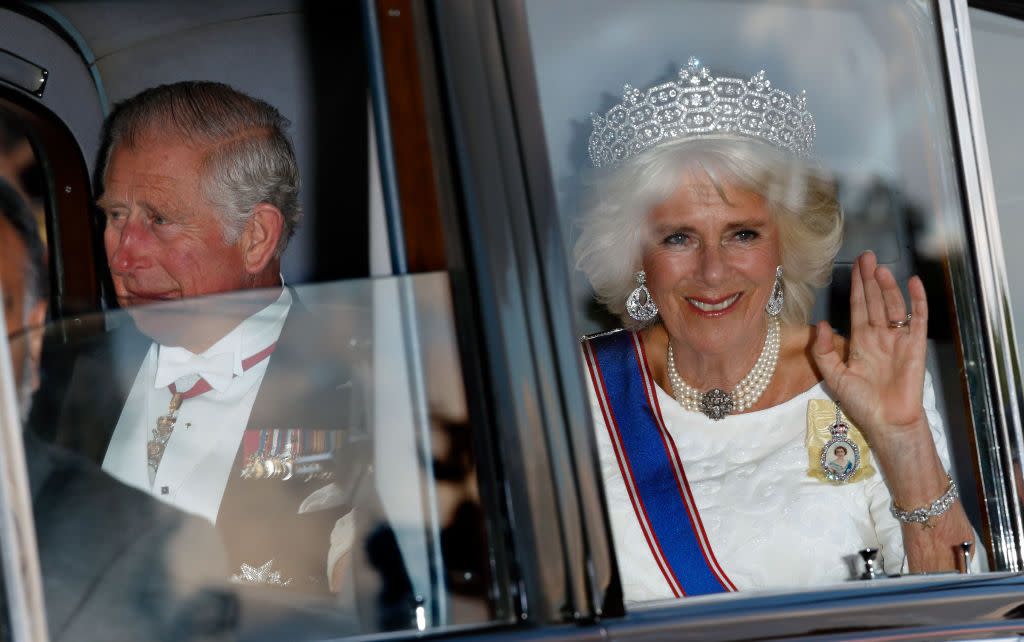
For his coronation on May 6 of next year, the king will don his coronation robes and Crown Jewels while it is assumed—but not confirmed—that the queen consort will wear the Queen Mother's 1937 crown for the occasion. Glittering with 2,800 diamonds and featuring both a large diamond gifted to Queen Victoria by the Sultan of Turkey in 1856 and the massive—and very controversial—105.6-carat Koh-i-Noor diamond, the piece was made for the coronation of King George VI in May 1937. Below, everything we know about the valuable gem, along with a brief history of the British royal family's consort crowns.
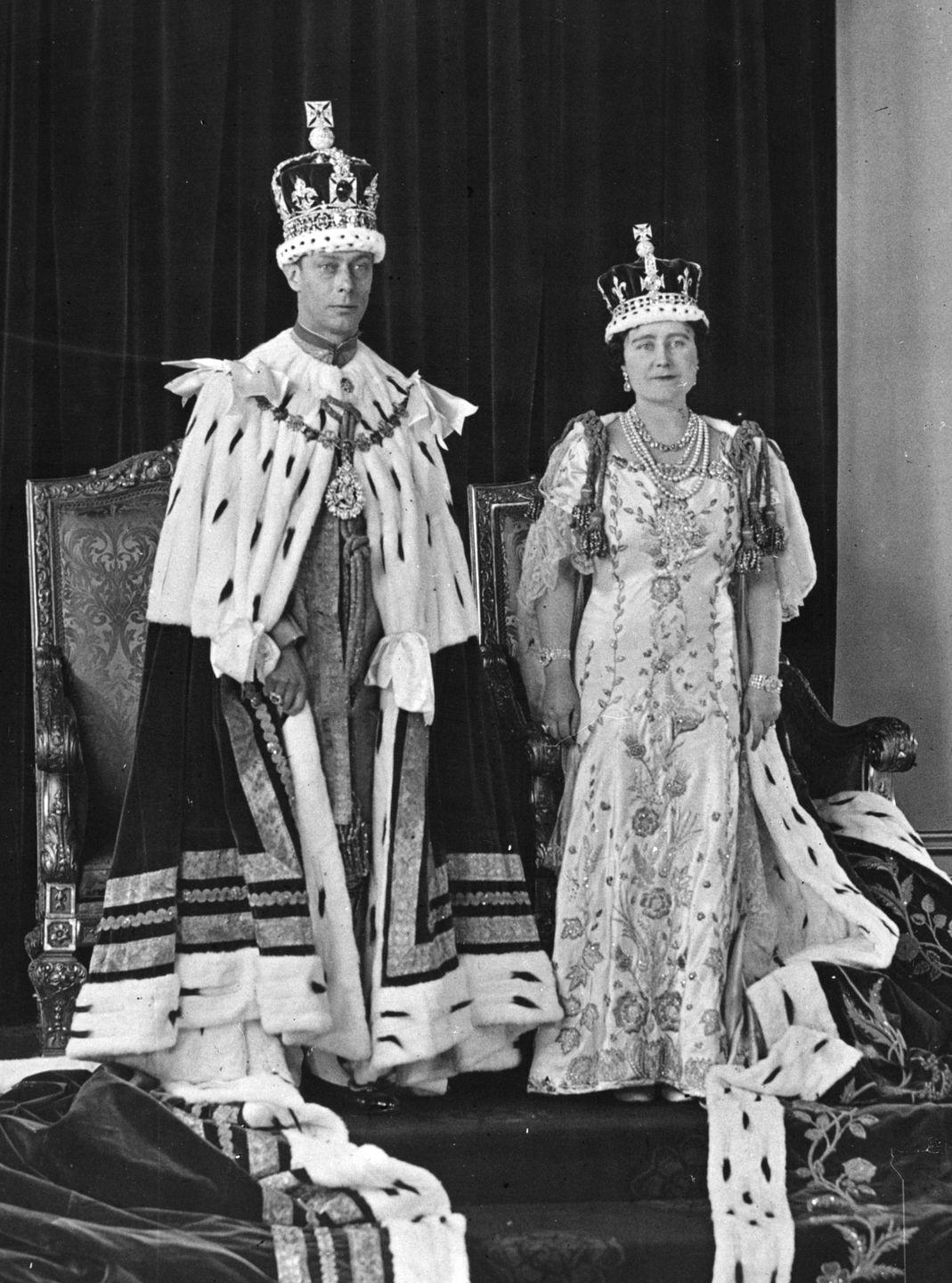
Throughout the 17th and 18th centuries, queens consort wore the same coronation crown.
When James II ascended the throne in 1685 after the death of his predecessor and brother, Charles II, a new suite of jewels had to be made for his wife, Mary of Modena, who would be the first queen to be crowned since the restoration of the monarchy in 1660. (Charles had been unmarried at the time of his coronation in 1661.) Three pieces were made for her: a diadem for the procession to Westminster Abbey, the coronation crown, and a state crown for leaving the Abbey, crafted with 561 diamonds and 129 pearls and decorated with crosses pattée and fleurs-de-lis. This last, dubbed the "Rich Crown," adorned three successive queens: Mary II in 1689, Queen Anne in 1702, and Queen Caroline in 1727.
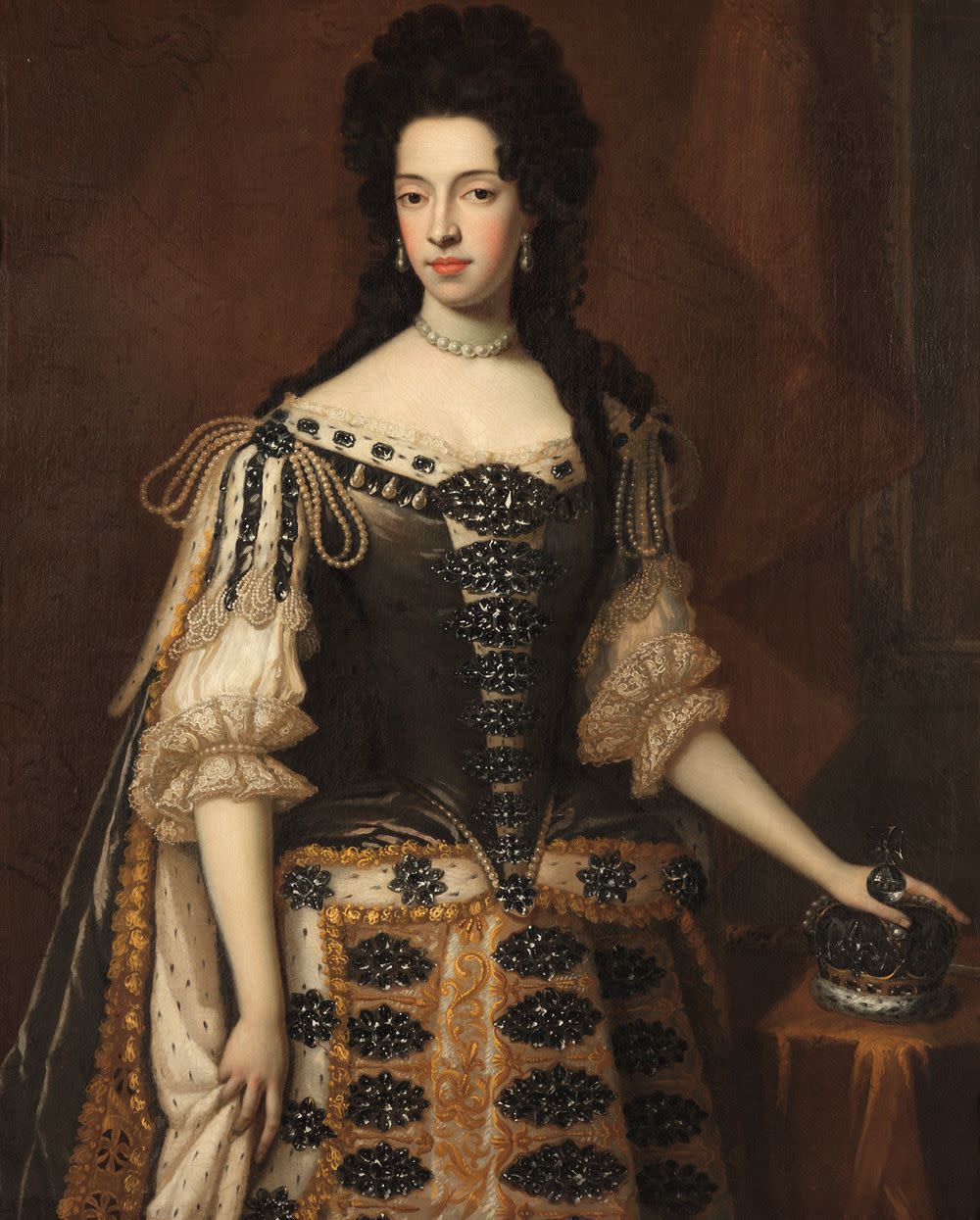
Queen Charlotte started the trend for consorts to have specially made crowns.
To begin her reign as the longest serving female consort in British history, Queen Charlotte had her own coronation tiara designed for the accession in 1761. Queens Adelaide (1831), Alexandra (1902), Mary (1911), and Elizabeth (1937) followed suit. Alexandra, who was Britain's first queen consort to be crowned after the 63-year-long reign of Queen Victoria, put her own spin on her headpiece by taking inspiration from European designs and commissioning detachable arches so it could also be worn as a circlet, an idea subsequently adopted by Mary and Elizabeth. Along with eight arches bearing alternating diamond-encrusted cross and fleur-de-lis motifs, the whole creation was centered with the Koh-i-Noor, which had been acquired by Queen Victoria (who wore it as a brooch). As with all exclusively made consort diadems, the stones were eventually replaced with paste so the real gems could be used in other jewels and future crowns.
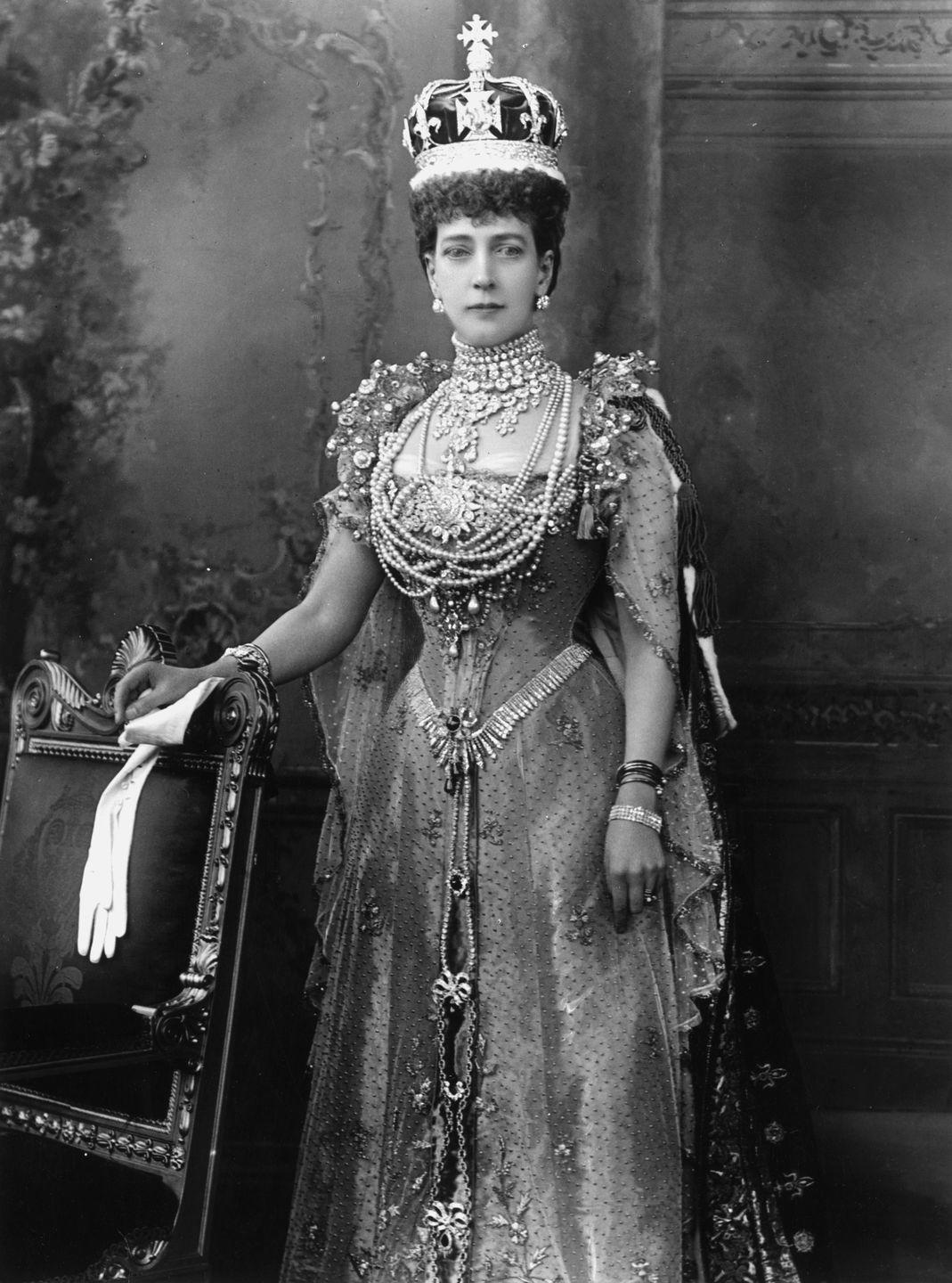
The Koh-i-Noor diamond then went to legendary jewelry lover Queen Mary, who, true to form, had court jeweler Garrard stud her Art Deco-inspired coronation masterpiece with not only this 105.6-carat diamond, but also the Cullinan III and IV diamonds, respectively clocking in at 94.4 and 63.6 carats. These were all also replaced with crystal replicas, with Mary using the Cullinans in her Delhi Durbar tiara or combined as a brooch, while the Koh-i-Noor was passed on to Queen Elizabeth to be used for her consort crown in 1937.
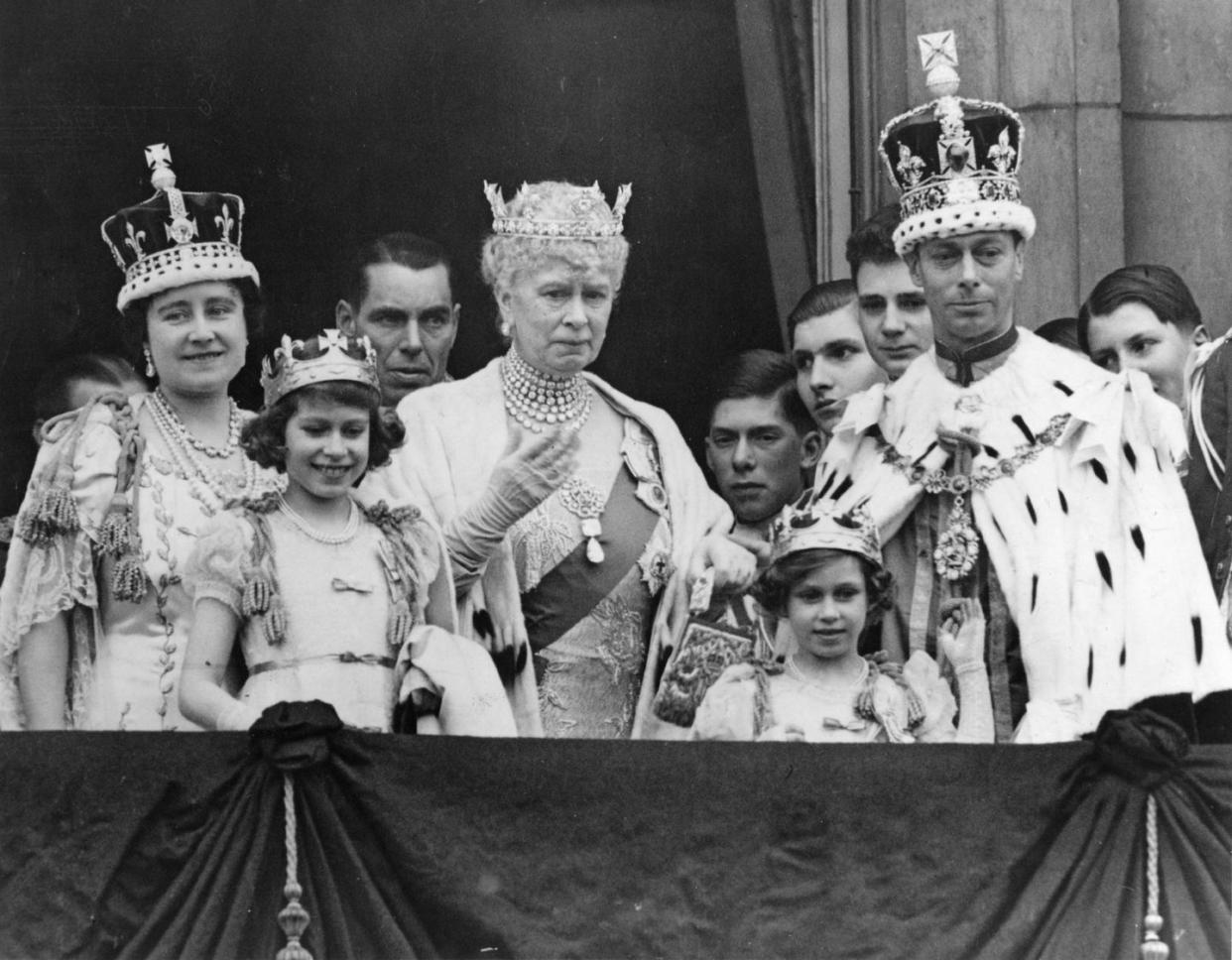
The Koh-i-Noor is a controversial gem with a complicated history.
The Koh-i-Noor has been the center of several ownership disputes since 1947, when India gained independence from the United Kingdom. The Indian government has been fighting for the return of the gem in the years since, with the most recent official request made in 2016, with the British rejecting their claims of ownership each time. In the '70s, Pakistan made its own claim, and then in 2000, the Taliban entered the debate, stating the stone belonged to Afghanistan. In light of the queen's death, the Koh-i-Noor has been trending once more, with some arguing it should be returned to India.
The diamond's notoriety can be attributed to its long and convoluted history. While it's unclear exactly when or where the Koh-i-Noor, which is Hindi for "mountain of light," was first discovered, it eventually entered the coffers of the Mughal Empire in 1526, where it was later used in Emperor Shah Jahan's bejeweled Peacock Throne. For the next three centuries, it was then either looted or bartered through a string of kingdoms, from Iran's Afsharid dynasty, to the Afghan Empire, to various warring factions of the Sikh Empire, until it ended up on the arm of the last Sikh maharaja, 5-year-old Duleep Singh, in 1843. The child king wouldn't have it for long. Two Anglo-Sikh wars broke out between 1845 and 1849, which led to the fall of the Sikh dynasty and the British forcing an 11-year-old Duleep to sign the Treaty of Lahore, which surrendered the Koh-i-Noor—and other assets—to Queen Victoria.
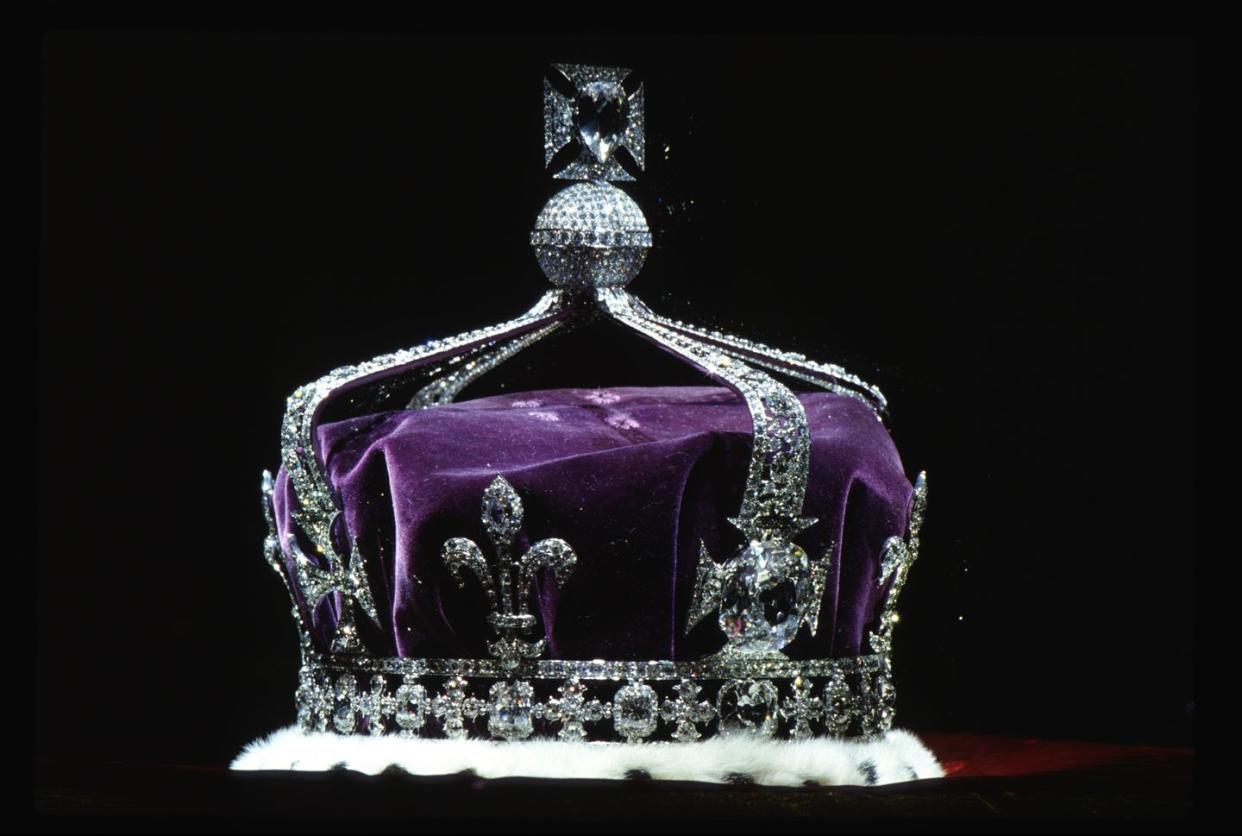
The diamond was formally presented to the monarch in the summer of 1850 and was cut to its present state two years later. Though Queen Victoria often wore the Koh-i-Noor as a brooch, she expressed her discontent with the way it was acquired in a letter to her daughter, Victoria: "No one feels more strongly than I do about India or how much I opposed our taking those countries and I think no more will be taken, for it is very wrong and no advantage to us," she wrote. "You know also how I dislike wearing the Koh-i-Noor."
Could Camilla get her own specially made consort crown?
While royal precedent might dictate that be the case, times have drastically changed for the Windsors since the peak of the British Empire. Such an extravagant jewelry commission seems unlikely, especially since it has been reported that King Charles favors more modern and slimmed down monarchy. As for whether this means the Duchess of Cornwall will avoid wearing such a notorious gem as the Koh-i-Noor with the whole world watching? Only time will tell.
You Might Also Like
